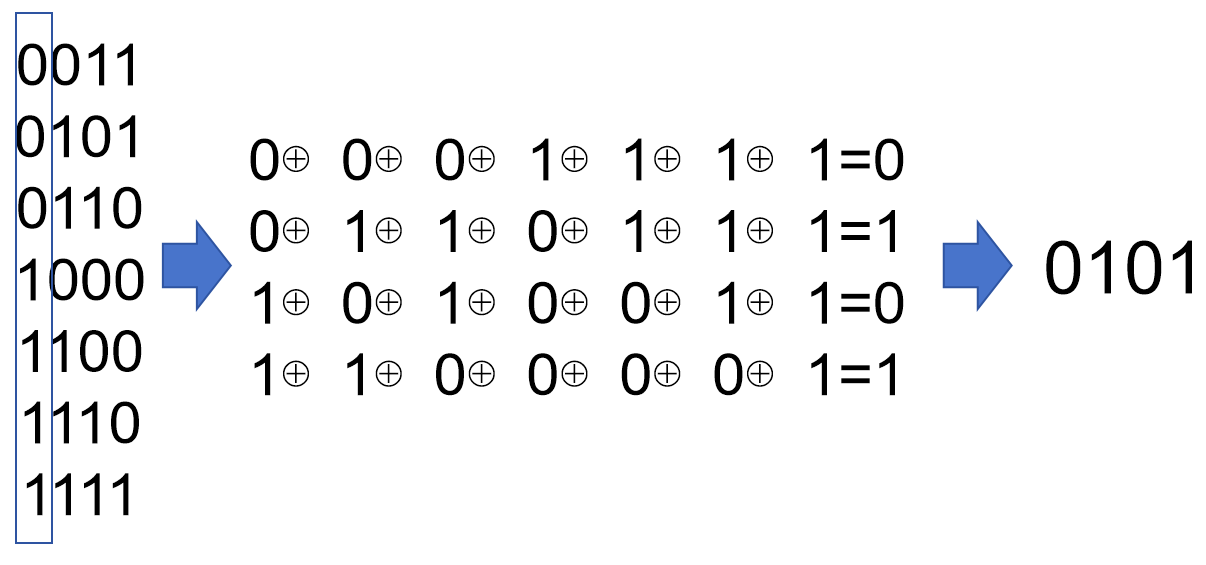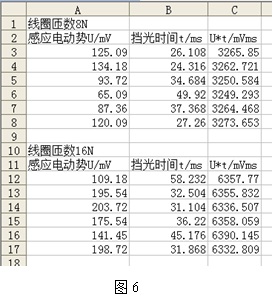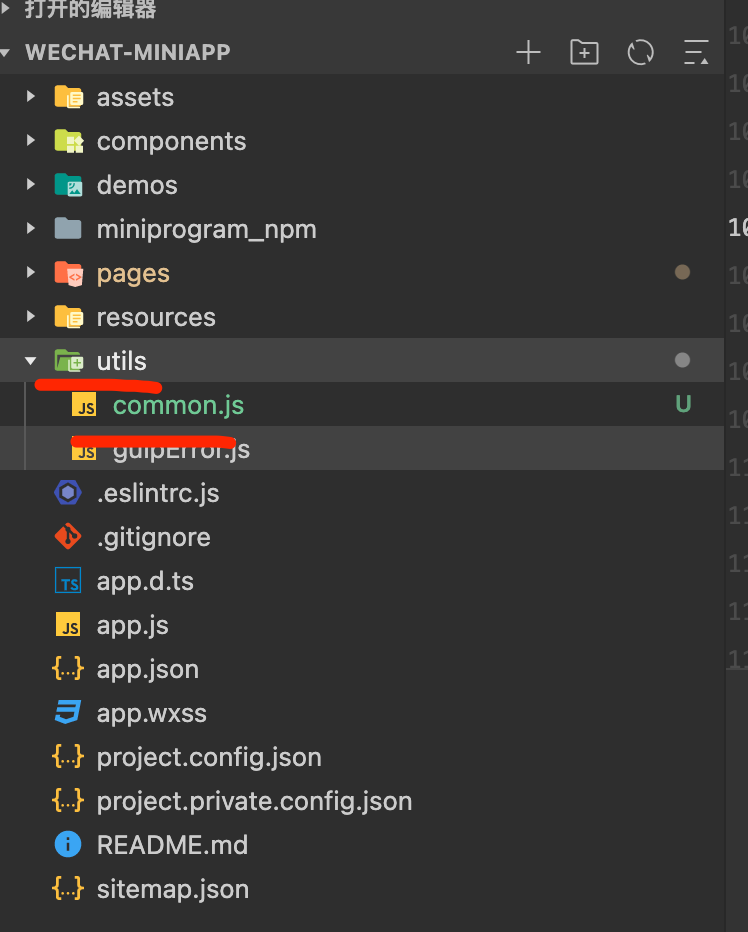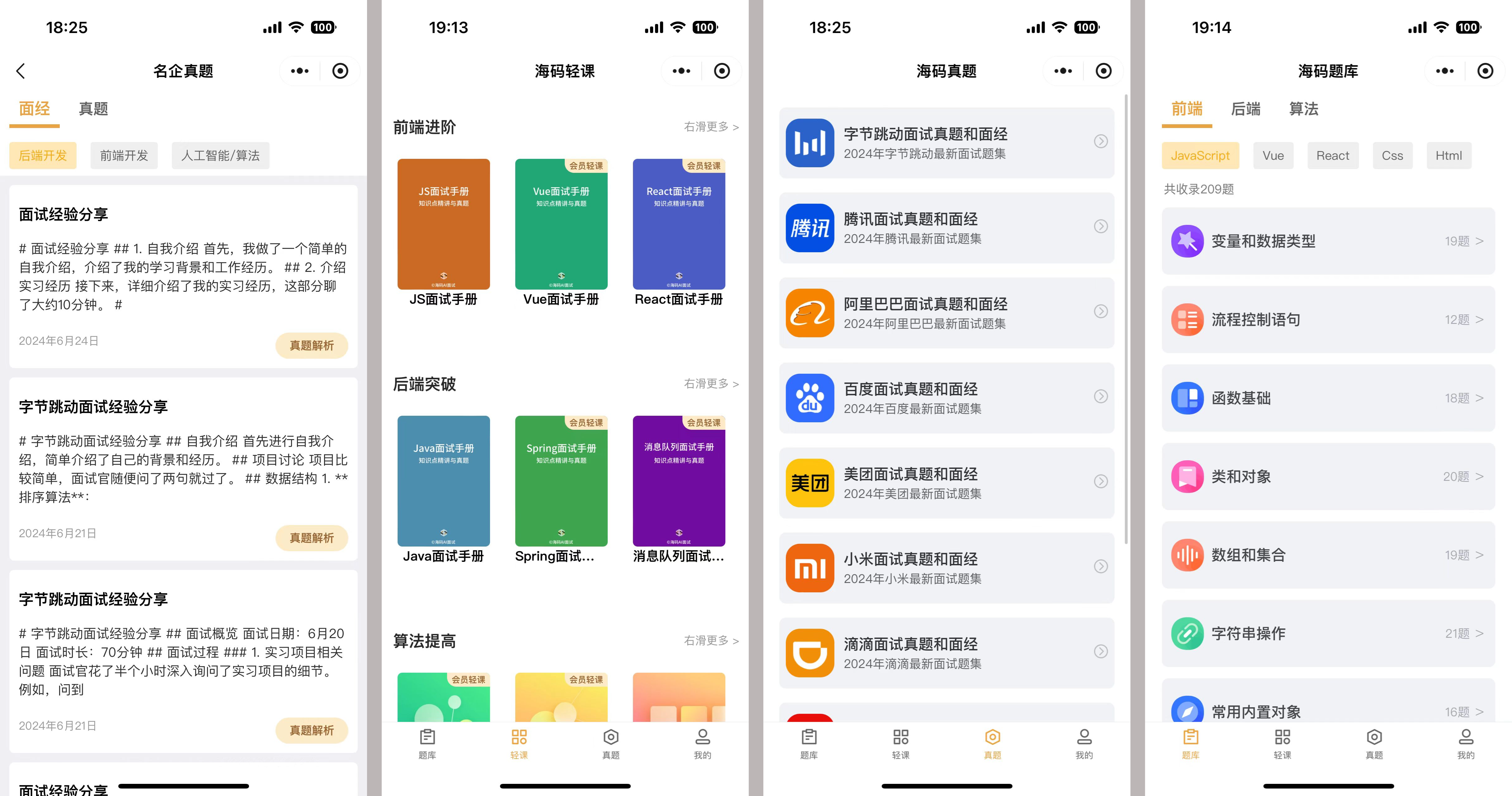目录
Vue简介
官网
介绍与描述
Vue的特点
与其它 JS 框架的关联
Vue周边库
初识Vue
Vue模板语法
数据绑定
el与data的两种写法
MVVM模型
数据代理
回顾Object.defineProperty方法
何为数据代理
Vue中的数据代理
数据代理图示
事件处理
事件的基本使用
事件修饰符
键盘事件
计算属性
姓名案例-插值语法实现
姓名案例-methods实现
姓名案例-计算属性实现
姓名案例-计算属性简写
监视属性
天气案例
天气案例_监视属性
天气案例_深度监视
天气案例_监视属性_简写
姓名案例-watch实现
绑定样式
条件渲染
列表渲染
基本列表
key的原理
列表过滤
列表排序
更新时的一个问题
Vue监测数据改变的原理_对象
模拟一个数据监测
Vue.set的使用
Vue监测数据改变的原理_数组
总结Vue监测数据
遍历列表时key的作用(id作为key)
遍历列表时key的作用(index作为key)
收集表单数据
过滤器
内置指令
v-text指令
v-html指令
v-cloak指令
v-once指令
v-pre指令
自定义指令
生命周期
引出生命周期
分析生命周期
总结生命周期
生命周期图示
Vue简介
官网
- 英文官网: https://vuejs.org/
- 中文官网: https://cn.vuejs.org/
介绍与描述
- 动态构建用户界面的渐进式 JavaScript 框架
- 作者: 尤雨溪
Vue的特点
- 遵循 MVVM 模式
- 编码简洁, 体积小, 运行效率高, 适合移动/PC 端开发
- 它本身只关注 UI, 也可以引入其它第三方库开发项目

与其它 JS 框架的关联
- 借鉴 Angular 的模板和数据绑定技术
- 借鉴 React 的组件化和虚拟 DOM 技术
Vue周边库
- vue-cli: vue 脚手架
- vue-resource
- axios
- vue-router: 路由
- vuex: 状态管理
- element-ui: 基于 vue 的 UI 组件库(PC 端)
- ……
初识Vue

<!DOCTYPE html>
<html lang="en">
<head>
<meta charset="UTF-8">
<meta name="viewport" content="width=device-width, initial-scale=1.0">
<title>初识Vue</title>
<!-- 引入开发版Vue -->
<script type="text/javascript" src="../js/vue.js"></script>
</head>
<body>
<!--
初识Vue:
1.想让Vue工作,就必须创建一个Vue实例,且要传入一个配置对象
2.root容器里的代码依然符合html规范,只不过混入了一些特殊的Vue语法
3.root容器里的代码被称为【Vue模板】
4.Vue实例和容器是一一对应的
5.真实开发中只有一个Vue实例,并且会配合着组件一起使用
6.{{xxx}}中的xxx要写js表达式,且xxx可以自动读取到data中的所有属性
7.一旦data中的数据发生改变,那么页面中用到该数据的地方也会自动更新
-->
<!--
注意区分:js表达式 和 js代码(语句)
1.表达式:一个表达式会生成一个值,可以放在任何一个需要值的地方
(1)a
(2)a+b 加法表达式
(3)demo(1) 函数调用表达式
(4)x == y ? 'a' : 'b' 三元表达式
2.js代码(语句)
(1)if(){}
(2)for(){}
-->
<!-- 准备好一个容器 -->
<div id="root">
<h1>Hello,{{name}},{{address}},{{Date.now()}}</h1>
</div>
</body>
<script type="text/javascript">
Vue.config.productionTip = false //阻止vue在启动时生成生产提示
//创建Vue实例
new Vue({
el:'#root', //el用于指定当前Vue实例为哪个容器服务,值通常为css选择器字符串
data:{//data中用于存储数据,数据供el所指定的容器去使用,值暂时先写成一个对象
name:'atguigu',
address:'beijing'
}
})
</script>
</html>Vue模板语法
<!DOCTYPE html>
<html lang="en">
<head>
<meta charset="UTF-8">
<meta name="viewport" content="width=device-width, initial-scale=1.0">
<title>模板语法</title>
<script type="text/javascript" src="../js/vue.js"></script>
</head>
<body>
<!--
Vue模板语法有2大类:
1.插值语法
功能:用于解析标签体内容
写法:{{xxx}},xxx是js表达式,且可以直接读取到data中的所有属性
2.指令语法
功能:用于解析标签(包括:标签属性、标签体内容、绑定事件...
举例:v-bind:href="xxx" 或 简写为 :href="xxx",xxx同样要写js表达式,且可以直接读取到data中的所有属性
备注:Vue中有很多的指令,且形式都是v-???,此处只是拿v-bind举个例子
-->
<div id="root">
<h1>插值语法</h1>
<h3>你好,{{name}}</h3>
</hr>
<h1>指令语法</h1>
<a v-bind:href="school.url.toUpperCase()" v-bind:x="school.hello">点我去{{school.name}}学习1</a>
<a :href="school.url" :x="school.hello">点我去{{school.name}}学习2</a>
</div>
</body>
<script type="text/javascript">
Vue.config.productionTip = false //阻止vue在启动时生成生产提示
//创建Vue实例
new Vue({
el:'#root',
data:{
name:'atguigu',
school:{
name:'尚硅谷',
url:'http://www.atguigu.com',
hello:'你好'
}
}
})
</script>
</html>数据绑定
单向数据绑定:

双向数据绑定:

<!DOCTYPE html>
<html lang="en">
<head>
<meta charset="UTF-8">
<meta name="viewport" content="width=device-width, initial-scale=1.0">
<title>数据绑定</title>
<script type="text/javascript" src="../js/vue.js"></script>
</head>
<body>
<!--
Vue中有2种数据绑定的方式:
1.单向绑定(v-bind):数据只能从data流向页面
2.双向绑定(v-model):数据不仅能从data流向页面,还可以从页面流向data
备注:
1.双向绑定一般都应用在表单类元素上(如:input、select等)
2.v-model:value可以简写为v-model,因为v-model默认收集的就是value值
-->
<div id="root">
<!-- 普通写法 -->
单向数据绑定:<input type="text" v-bind:value="name"><br/>
双向数据绑定:<input type="text" v-model:value="name"><br/>
<!-- 简写 -->
单向数据绑定:<input type="text" :value="name"><br/>
双向数据绑定:<input type="text" v-model="name"><br/>
<!-- 如下代码是错误的,因为v-model只能应用在表单类元素(输入类元素)上 -->
<!-- <h2 v-model:x="name">你好</h2> -->
</div>
</body>
<script type="text/javascript">
Vue.config.productionTip = false //阻止vue在启动时生成生产提示
new Vue({
el:'#root',
data:{
name:'尚硅谷1'
}
})
</script>
</html>el与data的两种写法
<!DOCTYPE html>
<html lang="en">
<head>
<meta charset="UTF-8">
<meta name="viewport" content="width=device-width, initial-scale=1.0">
<title>el与data的两种写法</title>
<script type="text/javascript" src="../js/vue.js"></script>
</head>
<body>
<!--
el与data的两种写法:
1.el有两种写法:
(1)new Vue时配置el属性
(2)先创建Vue实例,随后再通过vm.$mount('#root')指定el的值
2.data有两种写法:
(1)对象式
(2)函数式
如何选择:目前哪种写法都可以,以后学习到组件时,data必须使用函数式,否则会报错
3.一个重要的原则:
由Vue管理的函数,一定不要写箭头函数,一旦写了箭头函数,this就不再是Vue实例了
-->
<div id="root">
<h1>你好,{{name}}</h1>
</div>
</body>
<script type="text/javascript">
Vue.config.productionTip = false //阻止vue在启动时生成生产提示
//el的两种写法
/* const v = new Vue({
//el:'#root', //第一种写法
data:{
name:'尚硅谷1'
}
})
console.log(v)
v.$mount('#root') //第二种写法 */
//data的两种写法
new Vue({
el:'#root',
//第一种写法:对象式
/* data:{
name:'尚硅谷1'
} */
//第二种写法:函数式
data:function(){
console.log('@@@',this) //此处的this是Vue实例对象
return{
name:'尚硅谷1'
}
}
})
</script>
</html>MVVM模型


<!DOCTYPE html>
<html lang="en">
<head>
<meta charset="UTF-8">
<meta name="viewport" content="width=device-width, initial-scale=1.0">
<title>理解MVVM</title>
<script type="text/javascript" src="../js/vue.js"></script>
</head>
<body>
<!--
MVVM模型
1.M:模型(Model):data中的数据
2.V:视图(View):模板代码
3.VM:视图模型(ViewModel):Vue实例
观察发现:
1.data中所有的属性,最后都出现在了vm身上
2.vm身上所有的属性及Vue原型上所有属性,在Vue模板中都可以直接使用
-->
<div id="root">
<h1>学校名称:{{name}}</h1>
<h1>学校地址:{{address}}</h1>
<h1>测试一下1:{{1+1}}</h1>
<h1>测试一下:{{$options}}</h1>
</div>
</body>
<script type="text/javascript">
Vue.config.productionTip = false //阻止vue在启动时生成生产提示
const vm = new Vue({
el:'#root',
data:{
name:'尚硅谷1',
address:'北京',
a:1
}
})
console.log(vm)
</script>
</html>数据代理
回顾Object.defineProperty方法
<!DOCTYPE html>
<html lang="en">
<head>
<meta charset="UTF-8">
<meta name="viewport" content="width=device-width, initial-scale=1.0">
<title>回顾Object.defineProperty方法</title>
<script type="text/javascript" src="../js/vue.js"></script>
</head>
<body>
<script type="text/javascript">
let number = 18
let person = {
name:'张三',
sex:'男'
}
Object.defineProperty(person,'age',{
// value:18,
// enumerable:true, //控制属性是否可以枚举,默认值是false
// writable:true, //控制属性是否可以被修改,默认值是false
// configurable:true //控制属性是否可以被删除,默认值是false
//当有人读取person的age属性时,get函数(getter)就会被调用,且返回值就是age的值
get(){
console.log('有人读取age属性了')
return number
},
//当有人修改person的age属性时,set函数(setter)就会被调用,且会收到修改的具体值
set(value){
console.log('有人修改了age属性,且值是',value)
number = value
}
})
//console.log(Object.keys(person))
console.log(person)
</script>
</body>
</html>何为数据代理
<!DOCTYPE html>
<html lang="en">
<head>
<meta charset="UTF-8">
<meta name="viewport" content="width=device-width, initial-scale=1.0">
<title>何为数据代理</title>
</head>
<body>
<!-- 数据代理:通过一个对象代理对另一个对象中属性的操作(读/写) -->
<script type="text/javascript">
let obj = {x:100}
let obj2 = {y:200}
Object.defineProperty(obj2,'x',{
get(){
return obj.x
},
set(value){
obj.x = value
}
})
</script>
</body>
</html>Vue中的数据代理
<!DOCTYPE html>
<html lang="en">
<head>
<meta charset="UTF-8">
<meta name="viewport" content="width=device-width, initial-scale=1.0">
<title>Vue中的数据代理</title>
<script type="text/javascript" src="../js/vue.js"></script>
</head>
<body>
<!--
1.Vue中的数据代理:通过vm对象来代理data对象中属性的操作(读/写)
2.Vue中数据代理的好处:更加方便的操作data中的数据
3.基本原理:
通过Object.defineProperty()把data对象中所有属性添加到vm上
为每一个添加到vm上的属性,都指定一个getter/settter
在getter/setter内部去操作(读/写)data中对应的属性
-->
<div id="root">
<h2>学校名称:{{name}}</h2>
<h2>学校地址:{{address}}</h2>
</div>
</body>
<script type="text/javascript">
Vue.config.productionTip = false //阻止vue在启动时生成生产提示
const vm = new Vue({
el:'#root',
data:{
name:'尚硅谷1',
address:'北京'
}
})
console.log(vm)
</script>
</html>数据代理图示


事件处理
事件的基本使用
<!DOCTYPE html>
<html lang="en">
<head>
<meta charset="UTF-8">
<meta name="viewport" content="width=device-width, initial-scale=1.0">
<title>事件的基本使用</title>
<script type="text/javascript" src="../js/vue.js"></script>
</head>
<body>
<!--
事件的基本使用:
1.使用v-on:xxx或@xxx绑定事件,其中xxx是事件名
2.事件的回调需要配置在methods对象中,最终会在vm上
3.methods中配置的函数,不要用箭头函数,否则this就不是vm了
4.methods中配置的函数,都是被Vue所管理的函数,this的指向是vm或组件实例对象
5.@click="demo"和@click="demo($event)"效果一致,但后者可以传参
-->
<div id="root">
<h2>欢迎来到{{name}}学习</h2>
<!-- <button v-on:click="showInfo">点我提示信息</button> -->
<button @click="showInfo1">点我提示信息1(不传参)</button>
<button @click="showInfo2(66,$event)">点我提示信息2(传参)</button>
</div>
</body>
<script type="text/javascript">
Vue.config.productionTip = false //阻止vue在启动时生成生产提示
const vm = new Vue({
el:'#root',
data:{
name:'尚硅谷1'
},
methods:{
showInfo1(event){
alert('同学你好!')
//console.log(event.target.innerText)
//console.log(this) //此处的this是vm
},
showInfo2(number,event){
//alert('同学你好!!')
console.log(number,event)
}
}
})
</script>
</html>事件修饰符
<!DOCTYPE html>
<html lang="en">
<head>
<meta charset="UTF-8">
<meta name="viewport" content="width=device-width, initial-scale=1.0">
<title>事件修饰符</title>
<script type="text/javascript" src="../js/vue.js"></script>
<style>
*{
margin-top: 20px;
}
.demo1{
height: 50px;
background-color: skyblue;
}
.box1{
padding: 5px;
background-color: skyblue;
}
.box2{
padding: 5px;
background-color: orange;
}
.list{
width: 200px;
height: 200px;
background-color: peru;
overflow: auto;
}
li{
height: 100px;
}
</style>
</head>
<body>
<!--
Vue中的事件修饰符:
1.prevent:阻止默认事件(常用)
2.stop:阻止事件冒泡(常用) 【事件冒泡:多个组件嵌套,触发内层组件时,会一一触发外层事件】
3.once:事件只触发一次(常用)
4.capture:使用事件的捕获模式
5.self:只有event.target是当前操作的元素时才触发事件
6.passive:事件的默认行为立即执行,无需等待事件回调执行完毕
-->
<div id="root">
<h2>欢迎来到{{name}}学习</h2>
<!-- 阻止默认事件(常用) -->
<a href="http://www.atguigu.com" @click.prevent="showInfo">点我提示信息</a>
<!-- 阻止事件冒泡(常用) -->
<div class="demo1" @click="showInfo">
<!-- <button @click.stop="showInfo">点我提示信息</button> -->
<!-- 修饰符可以连续写 -->
<!-- <a href="http://www.atguigu.com" @click.stop.prevent="showInfo">点我提示信息</a> -->
</div>
<!-- 事件只触发一次(常用) -->
<button @click.once="showInfo">点我提示信息</button>
<!-- 使用事件的捕获模式 -->
<div class="box1" @click.capture="showMsg(1)">
div1
<div class="box2" @click="showMsg(2)">
div2
</div>
</div>
<!-- 只有event.target是当前操作的元素时才触发事件 -->
<div class="demo1" @click.self="showInfo">
<button @click="showInfo">点我提示信息</button>
</div>
<!-- 事件的默认行为立即执行,无需等待事件回调执行完毕 -->
<ul @wheel.passive="demo" class="list">
<li>1</li>
<li>2</li>
<li>3</li>
<li>4</li>
</ul>
</div>
</body>
<script type="text/javascript">
Vue.config.productionTip = false //阻止vue在启动时生成生产提示
const vm = new Vue({
el:'#root',
data:{
name:'尚硅谷1'
},
methods:{
showInfo(e){
alert('同学你好!')
//console.log(e.target)
},
showMsg(msg){
console.log(msg)
},
demo(){
for(let i = 0;i < 100000;i++){
console.log('#')
}
console.log('你好')
}
}
})
</script>
</html>键盘事件
<!DOCTYPE html>
<html lang="en">
<head>
<meta charset="UTF-8">
<meta name="viewport" content="width=device-width, initial-scale=1.0">
<title>键盘事件</title>
<script type="text/javascript" src="../js/vue.js"></script>
</head>
<body>
<!--
1.Vue中常用的按键别名:
回车 => enter
删除 => delete(捕获“删除”和“退格”键)
退出 => esc
空格 => space
换行 => tab (特殊,必须配合keydown使用)
上 => up
下 => down
左 => left
右 => right
2.Vue未提供别名的按键,可以使用按键原始的key值去绑定,但注意要转为kebab-case(短横线命名)
3.系统修饰键(用法特殊):ctrl、alt、shift、meta
(1)配合keyup使用:按下修饰键的同时,再按下其他键,随后释放其他键,事件才被触发
(2)配合keydown使用:正常触发事件
4.也可以使用keyCode去指定具体的按键(不推荐)
5.Vue.config.keyCodes.自定义键名 = 键码,可以去定制按键别名
-->
<div id="root">
<h2>欢迎来到{{name}}学习</h2>
<input type="text" placeholder="按下回车提示输入" @keyup.enter="showInfo">
</div>
</body>
<script type="text/javascript">
Vue.config.productionTip = false //阻止vue在启动时生成生产提示
const vm = new Vue({
el:'#root',
data:{
name:'尚硅谷1'
},
methods:{
showInfo(e){
console.log(e.target.value)
}
}
})
</script>
</html>计算属性
姓名案例-插值语法实现
<!DOCTYPE html>
<html lang="en">
<head>
<meta charset="UTF-8">
<meta name="viewport" content="width=device-width, initial-scale=1.0">
<title>姓名案例-插值语法实现</title>
<script type="text/javascript" src="../js/vue.js"></script>
</head>
<body>
<div id="root">
姓:<input type="text" v-model="firstName"><br/><br/>
名:<input type="text" v-model="lastName"><br/><br/>
全名:<span>{{firstName}}-{{lastName}}</span>
</div>
</body>
<script type="text/javascript">
Vue.config.productionTip = false //阻止vue在启动时生成生产提示
const vm = new Vue({
el:'#root',
data:{
firstName:'张',
lastName:'三'
}
})
</script>
</html>姓名案例-methods实现
<!DOCTYPE html>
<html lang="en">
<head>
<meta charset="UTF-8">
<meta name="viewport" content="width=device-width, initial-scale=1.0">
<title>姓名案例-methods实现</title>
<script type="text/javascript" src="../js/vue.js"></script>
</head>
<body>
<div id="root">
姓:<input type="text" v-model="firstName"><br/><br/>
名:<input type="text" v-model="lastName"><br/><br/>
全名:<span>{{fullName()}}</span>
</div>
</body>
<script type="text/javascript">
Vue.config.productionTip = false //阻止vue在启动时生成生产提示
const vm = new Vue({
el:'#root',
data:{
firstName:'张',
lastName:'三'
},
methods:{
fullName(){
return this.firstName + '-' +this.lastName
}
}
})
</script>
</html>姓名案例-计算属性实现
<!DOCTYPE html>
<html lang="en">
<head>
<meta charset="UTF-8">
<meta name="viewport" content="width=device-width, initial-scale=1.0">
<title>姓名案例-计算属性实现</title>
<script type="text/javascript" src="../js/vue.js"></script>
</head>
<body>
<!--
计算属性:
1.定义:要用的属性不存在,要通过已有属性计算得来
2.原理:底层借助了Object.defineProperty方法提供的getter和setter方法
3.get函数什么时候执行?
(1)初次读取时会执行一次
(2)当依赖的数据发生改变时会被再次调用
4.优势:与methods实现相比,内部有缓存机制(复用),效率更高,调试方便
5.备注:
(1)计算属性最终会出现在vm上,直接读取使用即可
(2)如果计算属性要被修改,那必须写set函数去响应修改,且set中要引起计算时依赖的数据发生改变
-->
<div id="root">
姓:<input type="text" v-model="firstName"><br/><br/>
名:<input type="text" v-model="lastName"><br/><br/>
全名:<span>{{fullName}}</span><br/><br/>
<!-- 全名:<span>{{fullName}}</span><br/><br/>
全名:<span>{{fullName}}</span><br/><br/>
全名:<span>{{fullName}}</span> -->
</div>
</body>
<script type="text/javascript">
Vue.config.productionTip = false //阻止vue在启动时生成生产提示
const vm = new Vue({
el:'#root',
data:{
firstName:'张',
lastName:'三'
},
computed:{
fullName:{
//get有什么作用?当有人读取fullName时,get就会被调用,且返回值就作为fullName的值
//get什么时候调用?1.初次读取fullName时 2.所依赖的数据发生变化时
get(){
console.log('get被调用了')
return this.firstName + '-' +this.lastName
},
//set什么时候调用?当fullName被修改时
set(value){
console.log('set',value)
const arr = value.split('-')
this.firstName = arr[0]
this.lastName = arr[1]
}
}
}
})
</script>
</html>姓名案例-计算属性简写
<!DOCTYPE html>
<html lang="en">
<head>
<meta charset="UTF-8">
<meta name="viewport" content="width=device-width, initial-scale=1.0">
<title>姓名案例-计算属性简写</title>
<script type="text/javascript" src="../js/vue.js"></script>
</head>
<body>
<div id="root">
姓:<input type="text" v-model="firstName"><br/><br/>
名:<input type="text" v-model="lastName"><br/><br/>
全名:<span>{{fullName}}</span><br/><br/>
</div>
</body>
<script type="text/javascript">
Vue.config.productionTip = false //阻止vue在启动时生成生产提示
const vm = new Vue({
el:'#root',
data:{
firstName:'张',
lastName:'三'
},
computed:{
//完整写法
/* fullName:{
get(){
console.log('get被调用了')
return this.firstName + '-' +this.lastName
},
set(value){
console.log('set',value)
const arr = value.split('-')
this.firstName = arr[0]
this.lastName = arr[1]
}
} */
//简写
fullName(){
console.log('get被调用了')
return this.firstName + '-' +this.lastName
}
}
})
</script>
</html>监视属性
天气案例
<!DOCTYPE html>
<html lang="en">
<head>
<meta charset="UTF-8">
<meta name="viewport" content="width=device-width, initial-scale=1.0">
<title>天气案例</title>
<script type="text/javascript" src="../js/vue.js"></script>
</head>
<body>
<div id="root">
<h2>今天天气很{{info}}</h2>
<!-- 绑定事件时:@xxx="yyy" yyy可以写一些简单的语句 -->
<!-- <button @click="isHot = !isHot">切换天气</button> -->
<button @click="changeWeather">切换天气</button>
</div>
</body>
<script type="text/javascript">
Vue.config.productionTip = false //阻止vue在启动时生成生产提示
const vm = new Vue({
el:'#root',
data:{
isHot:true
},
computed:{
info(){
return this.isHot ? '炎热' : '凉爽'
}
},
methods: {
changeWeather(){
this.isHot = !this.isHot
}
},
})
</script>
</html>天气案例_监视属性
<!DOCTYPE html>
<html lang="en">
<head>
<meta charset="UTF-8">
<meta name="viewport" content="width=device-width, initial-scale=1.0">
<title>天气案例_监视属性</title>
<script type="text/javascript" src="../js/vue.js"></script>
</head>
<body>
<!--
监视属性watch:
1.当被监视的属性变化时,回调函数自动调用,进行相关操作
2.监视的属性必须存在,才能进行监视
3.监视的两种写法:
(1)new Vue时传入watch配置
(2)通过vm.$watch监视
-->
<div id="root">
<h2>今天天气很{{info}}</h2>
<button @click="changeWeather">切换天气</button>
</div>
</body>
<script type="text/javascript">
Vue.config.productionTip = false //阻止vue在启动时生成生产提示
const vm = new Vue({
el:'#root',
data:{
isHot:true
},
computed:{
info(){
return this.isHot ? '炎热' : '凉爽'
}
},
methods: {
changeWeather(){
this.isHot = !this.isHot
}
},
//第一种写法
/* watch:{
isHot:{
immediate:true, //初始化时让handler调用一下
//handler什么时候调用?当isHot发生改变时
handler(newValue,oldValue){
console.log('isHot被修改了',newValue,oldValue)
}
}
} */
})
//第二种写法
vm.$watch('isHot',{
immediate:true,
handler(newValue,oldValue){
console.log('isHot被修改了',newValue,oldValue)
}
})
</script>
</html>天气案例_深度监视
<!DOCTYPE html>
<html lang="en">
<head>
<meta charset="UTF-8">
<meta name="viewport" content="width=device-width, initial-scale=1.0">
<title>天气案例_深度监视</title>
<script type="text/javascript" src="../js/vue.js"></script>
</head>
<body>
<!--
深度监视:
1.Vue中的watch默认不监测对象内部值的改变(一层)
2.配置deep:true可以监测对象内部值改变(多层)
备注:
1.Vue自身可以监测对象内部值的改变,但Vue提供的watch默认不可以
2.使用watch时根据数据的具体结构,决定是否采用深度监视
-->
<div id="root">
<h2>今天天气很{{info}}</h2>
<button @click="changeWeather">切换天气</button>
<hr/>
<h3>a的值是:{{numbers.a}}</h3>
<button @click="numbers.a++">点我让a+1</button>
<h3>b的值是:{{numbers.b}}</h3>
<button @click="numbers.b++">点我让b+1</button>
<button @click="numbers = {a:666,b:888}">彻底替换掉numbers</button>
</div>
</body>
<script type="text/javascript">
Vue.config.productionTip = false //阻止vue在启动时生成生产提示
const vm = new Vue({
el:'#root',
data:{
isHot:true,
numbers:{
a:1,
b:1
}
},
computed:{
info(){
return this.isHot ? '炎热' : '凉爽'
}
},
methods: {
changeWeather(){
this.isHot = !this.isHot
}
},
//第一种写法
watch:{
isHot:{
// immediate:true, //初始化时让handler调用一下
//handler什么时候调用?当isHot发生改变时
handler(newValue,oldValue){
console.log('isHot被修改了',newValue,oldValue)
}
},
//监视多级结构中某个属性的变化
/* 'numbers.a':{
handler(){
console.log('a被改变了')
}
} */
//监视多级结构中所有属性的变化
numbers:{
deep:true,
handler(){
console.log('numbers被改变了')
}
}
}
})
</script>
</html>天气案例_监视属性_简写
<!DOCTYPE html>
<html lang="en">
<head>
<meta charset="UTF-8">
<meta name="viewport" content="width=device-width, initial-scale=1.0">
<title>天气案例_监视属性_简写</title>
<script type="text/javascript" src="../js/vue.js"></script>
</head>
<body>
<div id="root">
<h2>今天天气很{{info}}</h2>
<button @click="changeWeather">切换天气</button>
</div>
</body>
<script type="text/javascript">
Vue.config.productionTip = false //阻止vue在启动时生成生产提示
const vm = new Vue({
el:'#root',
data:{
isHot:true
},
computed:{
info(){
return this.isHot ? '炎热' : '凉爽'
}
},
methods: {
changeWeather(){
this.isHot = !this.isHot
}
},
//第一种写法
watch:{
//正常写法
/* isHot:{
// immediate:true, //初始化时让handler调用一下
// deep:true, //深度监视
//handler什么时候调用?当isHot发生改变时
handler(newValue,oldValue){
console.log('isHot被修改了',newValue,oldValue)
}
} */
//简写
/* isHot(newValue,oldValue){
console.log('isHot被修改了',newValue,oldValue)
} */
}
})
//第二种写法
//正常写法
/* vm.$watch('isHot',{
immediate:true, //初始化时让handler调用一下
deep:true, //深度监视
//handler什么时候调用?当isHot发生改变时
handler(newValue,oldValue){
console.log('isHot被修改了',newValue,oldValue)
}
}) */
//简写
vm.$watch('isHot',function(newValue,oldValue){
console.log('isHot被修改了',newValue,oldValue)
})
</script>
</html>姓名案例-watch实现
<!DOCTYPE html>
<html lang="en">
<head>
<meta charset="UTF-8">
<meta name="viewport" content="width=device-width, initial-scale=1.0">
<title>姓名案例-watch实现</title>
<script type="text/javascript" src="../js/vue.js"></script>
</head>
<body>
<!--
computed和watch之间的区别:
1.computed能完成的功能,watch都可以完成
2.watch能完成的功能,computed不一定能完成,例如:watch可以进行异步操作
两个重要的小原则:
1.所有被Vue管理的函数,最好写成普通函数,这样this的指向才是vm或组件实例对象
2.所有不被Vue管理的函数(定时器的回调函数、ajax的回调函数、Promise的回调函数等),最好写成箭头函数,这样this的指向才是vm或组件实例对象
-->
<div id="root">
姓:<input type="text" v-model="firstName"><br/><br/>
名:<input type="text" v-model="lastName"><br/><br/>
全名:<span>{{fullName}}</span><br/><br/>
</div>
</body>
<script type="text/javascript">
Vue.config.productionTip = false //阻止vue在启动时生成生产提示
const vm = new Vue({
el:'#root',
data:{
firstName:'张',
lastName:'三',
fullName:'张-三'
},
watch:{
firstName(val){
this.fullName = val + '-' + this.lastName
},
lastName(val){
this.fullName = this.firstName + '-' + val
}
}
})
</script>
</html>绑定样式
<!DOCTYPE html>
<html lang="en">
<head>
<meta charset="UTF-8">
<meta name="viewport" content="width=device-width, initial-scale=1.0">
<title>绑定样式</title>
<script type="text/javascript" src="../js/vue.js"></script>
<style>
.basic{
width: 400px;
height: 100px;
border: 1px solid black;
}
.happy{
background-color: orange;
}
.sad{
background-color: gray;
border-color: green;
}
.normal{
background-color: skyblue;
}
.atguigu1{
background-color: greenyellow;
}
.atguigu2{
font-size: larger;
}
.atguigu3{
border-radius: 2cap;
}
</style>
</head>
<body>
<!--
绑定样式:
1.class样式
写法:class='xxx' xxx可以是字符串、对象、数组
字符串写法适用于:类名不确定,要动态获取
对象写法适用于:要绑定多个样式,个数不确定,名字也不确定
数组写法适用于:要绑定多个样式,个数确定,名字也确定,但不确定用不用
2.style样式
:style="{fontSize:xxx}" 其中xxx是动态值
:style="[a,b]" 其中a、b是样式对象
-->
<div id="root">
<!-- 绑定class样式——字符串写法,适用于:样式的类名不确定,需要动态指定 -->
<div class="basic" :class="mood" @click="changeMood">{{name}}</div><br/><br/>
<!-- 绑定class样式——数组写法,适用于:要绑定的样式个数不确定,名字也不确定 -->
<div class="basic" :class="classArr">{{name}}</div><br/><br/>
<!-- 绑定class样式——对象写法,适用于:要绑定的样式个数确定,名字也确定,但要动态决定用不用 -->
<div class="basic" :class="classObj">{{name}}</div><br/><br/>
<!-- 绑定style样式——对象写法 -->
<div class="basic" :style="styleObj">{{name}}</div><br/><br/>
<!-- 绑定style样式——数组写法 -->
<div class="basic" :style="[styleObj,styleObj2]">{{name}}</div>
</div>
</body>
<script type="text/javascript">
Vue.config.productionTip = false //阻止vue在启动时生成生产提示
const vm = new Vue({
el:'#root',
data:{
name:'尚硅谷1',
mood:'normal',
classArr:['atguigu1','atguigu2','atguigu3'],
classObj:{
atguigu1:false,
atguigu2:false
},
styleObj:{
fontSize: '40px',
color:'red'
},
styleObj2:{
backgroundColor:'orange'
}
},
methods: {
changeMood(){
// this.mood = 'happy'
const arr = ['happy','sad','normal']
const index = Math.floor(Math.random()*3) //Math.random()的范围是[0,1)
this.mood = arr[index]
}
}
})
</script>
</html>条件渲染
<!DOCTYPE html>
<html lang="en">
<head>
<meta charset="UTF-8">
<meta name="viewport" content="width=device-width, initial-scale=1.0">
<title>条件渲染</title>
<script type="text/javascript" src="../js/vue.js"></script>
</head>
<body>
<!--
条件渲染:
1.v-if:
写法:
(1)v-if="表达式"
(2)v-else-if="表达式"
(3)v-else="表达式"
适用于:切换频率较低的场景
特点:不展示的DOM元素直接被移除
注意:v-if可以和v-else-if、v-else一起使用,但要求结构不能被打断
2.v-show:
写法:v-show="表达式"
适用于:切换频率较高的场景
特点:不展示的DOM元素未被移除,仅仅是使用样式隐藏掉
3.备注:使用v-if时,元素可能无法获取到,而使用v-show一定可以获取到
-->
<div id="root">
<h2>当前的n值是:{{n}}</h2>
<button @click="n++">点我n+1</button>
<!-- 使用v-show做条件渲染 -->
<!-- <h2 v-show="false">欢迎来到{{name}}</h2> -->
<!-- <h2 v-show="1 === 1">欢迎来到{{name}}</h2> -->
<!-- 使用v-if做条件渲染 -->
<!-- <h2 v-if="false">欢迎来到{{name}}</h2> -->
<!-- <h2 v-if="1 === 1">欢迎来到{{name}}</h2> -->
<!-- v-else和v-else-if -->
<!-- <div v-if="n == 1">Angular</div>
<div v-else-if="n == 2">React</div>
<div v-else-if="n == 3">Vue</div>
<div v-else>你好</div> -->
<!-- <div v-show="n == 1">Angular</div>
<div v-show="n == 2">React</div>
<div v-show="n == 3">Vue</div> -->
<!-- v-if与template的配合使用(template不会改变结构) -->
<template v-if="n === 1">
<h2>你好</h2>
<h2>尚硅谷</h2>
<h2>北京</h2>
</template>
</div>
</body>
<script type="text/javascript">
Vue.config.productionTip = false //阻止vue在启动时生成生产提示
const vm = new Vue({
el:'#root',
data:{
name:'尚硅谷1',
n:0
}
})
</script>
</html>列表渲染
基本列表
<!DOCTYPE html>
<html lang="en">
<head>
<meta charset="UTF-8">
<meta name="viewport" content="width=device-width, initial-scale=1.0">
<title>基本列表</title>
<script type="text/javascript" src="../js/vue.js"></script>
</head>
<body>
<!--
v-for指令:
1.用于展示列表数据
2.语法:v-for="(item,index) in xxx" :key="yyy"
3.可遍历:数组、对象、字符串(用的很少)、指定次数(用的很少)
-->
<div id="root">
<!-- 遍历数组 -->
<h2>人员列表(遍历数组)</h2>
<ul>
<!-- 第一种写法 -->
<li v-for="p in persons" :key="p.id">
{{p.name}}-{{p.age}}
</li>
<!-- 第二种写法 -->
<!-- <li v-for="(p,index) in persons" :key="index">
{{p.name}}-{{p.age}}
</li> -->
</ul>
<!-- 遍历对象 -->
<h2>汽车信息(遍历对象)</h2>
<ul>
<li v-for="(value,k) of car" :key="k">
{{k}}-{{value}}
</li>
</ul>
<!-- 遍历字符串(不常用) -->
<h2>测试遍历字符串</h2>
<ul>
<li v-for="(char,index) of str" :key="index">
{{char}}-{{index}}
</li>
</ul>
<!-- 遍历指定次数(不常用) -->
<h2>测试遍历指定次数</h2>
<ul>
<li v-for="(number,index) of 5" :key="index">
{{number}}-{{index}}
</li>
</ul>
</div>
</body>
<script type="text/javascript">
Vue.config.productionTip = false //阻止vue在启动时生成生产提示
const vm = new Vue({
el:'#root',
data:{
persons:[
{id:'001',name:'张三',age:18},
{id:'002',name:'李四',age:19},
{id:'003',name:'王五',age:20}
],
car:{
name:'奥迪',
price:'70万',
color:'黑色'
},
str:"hello"
}
})
</script>
</html>key的原理
<!DOCTYPE html>
<html lang="en">
<head>
<meta charset="UTF-8">
<meta name="viewport" content="width=device-width, initial-scale=1.0">
<title>key的原理</title>
<script type="text/javascript" src="../js/vue.js"></script>
</head>
<body>
<!--
面试题:react、vue中的key有什么作用?(key的原理)
1.虚拟DOM中key的作用:
key是虚拟DOM对象的标识,当状态中的数据发生变化时,Vue会根据【新数据】生成【新的虚拟DOM】,
随后Vue进行【新虚拟DOM】与【旧虚拟DOM】的差异比较,比较规则如下:
2.对比规则:
(1)旧虚拟DOM中找到了与新虚拟DOM相同的key:
a.若虚拟DOM中内容没变,直接使用之前的真实DOM
b.若虚拟DOM中内容变了,则生成新的真实DOM,随后替换掉页面中之前的真实DOM
(2)旧虚拟DOM中未找到与新虚拟DOM相同的key:
创建新的真实DOM,随后渲染到页面
3.用index作为key可能会引发的问题:
(1)若对数据进行逆序添加、逆序删除等破坏顺序的操作:
会产生没有必要的真实DOM更新 => 界面效果没问题,但效率低
(2)如果结构中还包含输入类的DOM:
会产生错误DOM更新 => 界面有问题
4.开发中如何选择key?
(1)最好使用每条数据的唯一标识作为key,如id、手机号、身份证号、学号等唯一值
(2)如果不存在对数据的逆序添加、逆序删除等破坏顺序的操作,仅用于渲染列表用于展示,使用index作为key是没有问题的
-->
<div id="root">
<!-- 遍历数组 -->
<h2>人员列表(遍历数组)</h2>
<button @click.once="add">添加一个老刘</button>
<ul>
<li v-for="(p,index) in persons" :key="index">
{{p.name}}-{{p.age}}
<input type="text">
</li>
</ul>
</div>
</body>
<script type="text/javascript">
Vue.config.productionTip = false //阻止vue在启动时生成生产提示
const vm = new Vue({
el:'#root',
data:{
persons:[
{id:'001',name:'张三',age:18},
{id:'002',name:'李四',age:19},
{id:'003',name:'王五',age:20}
]
},
methods: {
add(){
const p = {id:'004',name:'老刘',age:40}
this.persons.unshift(p)
}
}
})
</script>
</html>列表过滤
<!DOCTYPE html>
<html lang="en">
<head>
<meta charset="UTF-8">
<meta name="viewport" content="width=device-width, initial-scale=1.0">
<title>列表过滤</title>
<script type="text/javascript" src="../js/vue.js"></script>
</head>
<body>
<!--
任何字符串都包含空串,空串索引值为0
-->
<div id="root">
<!-- 遍历数组 -->
<h2>人员列表</h2>
<input type="text" placeholder="请输入名字" v-model="keyWord">
<ul>
<li v-for="(p,index) in filPersons" :key="index">
{{p.name}}-{{p.age}}-{{p.sex}}
</li>
</ul>
</div>
</body>
<script type="text/javascript">
Vue.config.productionTip = false //阻止vue在启动时生成生产提示
//用watch实现
/* const vm = new Vue({
el:'#root',
data:{
keyWord:'',
persons:[
{id:'001',name:'马冬梅',age:19,sex:'女'},
{id:'002',name:'周冬雨',age:20,sex:'女'},
{id:'003',name:'周杰伦',age:21,sex:'男'},
{id:'004',name:'温兆伦',age:22,sex:'男'}
],
filPersons:[]
},
watch:{
keyWord:{
immediate:true,//初始化时让handler调用一下
handler(val){
this.filPersons = this.persons.filter((p) => {
return p.name.indexOf(val) !== -1 //indexOf返回索引值,不存在返回-1
})
}
}
}
}) */
//用computed实现
const vm = new Vue({
el:'#root',
data:{
keyWord:'',
persons:[
{id:'001',name:'马冬梅',age:19,sex:'女'},
{id:'002',name:'周冬雨',age:20,sex:'女'},
{id:'003',name:'周杰伦',age:21,sex:'男'},
{id:'004',name:'温兆伦',age:22,sex:'男'}
]
},
computed:{
filPersons(){
return this.persons.filter((p) => {
return p.name.indexOf(this.keyWord) !== -1 //indexOf返回索引值,不存在返回-1
})
}
}
})
</script>
</html>列表排序
<!DOCTYPE html>
<html lang="en">
<head>
<meta charset="UTF-8">
<meta name="viewport" content="width=device-width, initial-scale=1.0">
<title>列表排序</title>
<script type="text/javascript" src="../js/vue.js"></script>
</head>
<body>
<div id="root">
<!-- 遍历数组 -->
<h2>人员列表</h2>
<input type="text" placeholder="请输入名字" v-model="keyWord">
<button @click = "sortType = 2">年龄升序</button>
<button @click = "sortType = 1">年龄降序</button>
<button @click = "sortType = 0">原顺序</button>
<ul>
<li v-for="(p,index) in filPersons" :key="p.id">
{{p.name}}-{{p.age}}-{{p.sex}}
</li>
</ul>
</div>
</body>
<script type="text/javascript">
Vue.config.productionTip = false //阻止vue在启动时生成生产提示
//用computed实现
const vm = new Vue({
el:'#root',
data:{
keyWord:'',
sortType:0, //0原顺序 1降序 2升序
persons:[
{id:'001',name:'马冬梅',age:30,sex:'女'},
{id:'002',name:'周冬雨',age:31,sex:'女'},
{id:'003',name:'周杰伦',age:18,sex:'男'},
{id:'004',name:'温兆伦',age:19,sex:'男'}
]
},
computed:{
filPersons(){
const arr = this.persons.filter((p) => {
return p.name.indexOf(this.keyWord) !== -1 //indexOf返回索引值,不存在返回-1
})
//判断一下是否需要排序
if(this.sortType){
arr.sort((p1,p2) => {
return this.sortType === 1 ? p2.age-p1.age : p1.age-p2.age
})
}
return arr
}
}
})
</script>
</html>更新时的一个问题
<!DOCTYPE html>
<html lang="en">
<head>
<meta charset="UTF-8">
<meta name="viewport" content="width=device-width, initial-scale=1.0">
<title>更新时的一个问题</title>
<script type="text/javascript" src="../js/vue.js"></script>
</head>
<body>
<div id="root">
<!-- 遍历数组 -->
<h2>人员列表</h2>
<button @click="updateMei">更新马冬梅的信息</button>
<ul>
<li v-for="(p,index) in persons" :key="p.id">
{{p.name}}-{{p.age}}-{{p.sex}}
</li>
</ul>
</div>
</body>
<script type="text/javascript">
Vue.config.productionTip = false //阻止vue在启动时生成生产提示
//用computed实现
const vm = new Vue({
el:'#root',
data:{
persons:[
{id:'001',name:'马冬梅',age:30,sex:'女'},
{id:'002',name:'周冬雨',age:31,sex:'女'},
{id:'003',name:'周杰伦',age:18,sex:'男'},
{id:'004',name:'温兆伦',age:19,sex:'男'}
]
},
methods: {
updateMei(){
// this.persons[0].name = '马老师' //奏效
// this.persons[0].age = 50 //奏效
// this.persons[0].sex = '男' //奏效
//不奏效
// this.persons[0] = {id:'001',name:'马老师',age:50,sex:'男'}
this.persons.splice(0,1,{id:'001',name:'马老师',age:50,sex:'男'})
}
}
})
</script>
</html>Vue监测数据改变的原理_对象
<!DOCTYPE html>
<html lang="en">
<head>
<meta charset="UTF-8">
<meta name="viewport" content="width=device-width, initial-scale=1.0">
<title>Vue监测数据改变的原理_对象</title>
<script type="text/javascript" src="../js/vue.js"></script>
</head>
<body>
<div id="root">
<h2>学校名称:{{name}}</h2>
<h2>学校地址:{{address}}</h2>
</div>
</body>
<script type="text/javascript">
Vue.config.productionTip = false //阻止vue在启动时生成生产提示
const vm = new Vue({
el:'#root',
data:{
name:'尚硅谷1',
address:'北京'
}
})
</script>
</html>模拟一个数据监测
<!DOCTYPE html>
<html lang="en">
<head>
<meta charset="UTF-8">
<meta name="viewport" content="width=device-width, initial-scale=1.0">
<title>模拟一个数据监测</title>
</head>
<body>
<script type="text/javascript">
let data = {
name:'尚硅谷1',
address:'北京'
}
//创建一个监视的实例对象,用于监视data中属性的变化
const obs = new Observer(data)
console.log(obs)
//准备一个vm实例对象
let vm = {}
vm._data = data = obs
function Observer(obj){
//汇总对象中所有的属性形成一个数组
const keys = Object.keys(obj)
//遍历
keys.forEach((k)=>{
Object.defineProperty(this,k,{
get(){
return obj[k]
},
set(val){
console.log('${k}被改了,要去解析模板,生成虚拟DOM了')
obj[k] = val
}
})
})
}
</script>
</body>
</html>Vue.set的使用
<!DOCTYPE html>
<html lang="en">
<head>
<meta charset="UTF-8">
<meta name="viewport" content="width=device-width, initial-scale=1.0">
<title>Vue.set的使用</title>
<script type="text/javascript" src="../js/vue.js"></script>
</head>
<body>
<div id="root">
<h1>学校信息</h1>
<h2>学校名称:{{name}}</h2>
<h2>学校地址:{{address}}</h2>
<hr/>
<button @click="addSex">添加一个性别属性,默认值是男</button>
<h2>学生信息</h2>
<h2>学生姓名:{{student.name}}</h2>
<h2 v-if="student.sex">学生性别:{{student.sex}}</h2>
<h2>学生年龄:真实{{student.age.rAge}},对外{{student.age.sAge}}</h2>
<h2>朋友们</h2>
<ul>
<li v-for="(f,index) in student.friends" :key="index">
{{f.name}}--{{f.age}}
</li>
</ul>
</div>
</body>
<script type="text/javascript">
Vue.config.productionTip = false //阻止vue在启动时生成生产提示
const vm = new Vue({
el:'#root',
data:{
name:'尚硅谷1',
address:'北京',
student:{
name:"tom",
age:{
rAge:40,
sAge:29
},
friends:[
{name:'jerry',age:35},
{name:'tony',age:36}
]
}
},
methods: {
addSex(){
// Vue.set(this.student,'sex','男')
this.$set(this.student,'sex','男')
}
}
})
</script>
</html>Vue监测数据改变的原理_数组
<!DOCTYPE html>
<html lang="en">
<head>
<meta charset="UTF-8">
<meta name="viewport" content="width=device-width, initial-scale=1.0">
<title>Vue监测数据改变的原理_数组</title>
<script type="text/javascript" src="../js/vue.js"></script>
</head>
<body>
<div id="root">
<h1>学校信息</h1>
<h2>学校名称:{{name}}</h2>
<h2>学校地址:{{address}}</h2>
<hr/>
<button @click="addSex">添加一个性别属性,默认值是男</button>
<h2>学生信息</h2>
<h2>学生姓名:{{student.name}}</h2>
<h2 v-if="student.sex">学生性别:{{student.sex}}</h2>
<h2>学生年龄:真实{{student.age.rAge}},对外{{student.age.sAge}}</h2>
<h2>爱好</h2>
<ul>
<li v-for="(h,index) in student.hobby" :key="index">
{{h}}
</li>
</ul>
<h2>朋友们</h2>
<ul>
<li v-for="(f,index) in student.friends" :key="index">
{{f.name}}--{{f.age}}
</li>
</ul>
</div>
</body>
<script type="text/javascript">
Vue.config.productionTip = false //阻止vue在启动时生成生产提示
const vm = new Vue({
el:'#root',
data:{
name:'尚硅谷1',
address:'北京',
student:{
name:"tom",
age:{
rAge:40,
sAge:29
},
hobby:['读书','看剧','运动'],
friends:[
{name:'jerry',age:35},
{name:'tony',age:36}
]
}
},
methods: {
addSex(){
// Vue.set(this.student,'sex','男')
this.$set(this.student,'sex','男')
}
}
})
</script>
</html>总结Vue监测数据
<!DOCTYPE html>
<html lang="en">
<head>
<meta charset="UTF-8">
<meta name="viewport" content="width=device-width, initial-scale=1.0">
<title>总结Vue监测数据</title>
<script type="text/javascript" src="../js/vue.js"></script>
</head>
<body>
<!--
Vue监视数据的原理:
1.Vue会监视data中所有层次的数据
2.如何监测对象中的数据?
通过setter实现监视,且要在new Vue时就传入要监测的数据
(1)对象中后追加的属性,Vue默认不做响应式处理
(2)如需给后添加的属性做响应式,请使用如下API:
Vue.set(target,propertyName/index,value)或
vm.$set(target,propertyName/index,value)
3.如何监测数组中的数据?
通过包裹数组更新元素的方法实现,本质就是做了两件事:
(1)调用原生对应的方法对数组进行更新
(2)重新解析模板,进而更新页面
4.在Vue修改数组中的某个元素一定要用如下方法:
(1)使用这些API:push()、pop()、shift()、unshift()、splice()、sort()、reverse()
(2)Vue.set()或vm.$set
特别注意:
Vue.set()和vm.$set()不能给vm或vm的根数据对象(也就是vm._data)添加属性
-->
<div id="root">
<h2>学生信息</h2>
<button @click="student.age++">年龄+1岁</button><br/>
<button @click="addSex">添加性别属性,默认值:男</button><br/>
<button @click="student.sex= '未知'">修改性别</button><br/>
<button @click="addFriend">在列表首位添加一个朋友</button><br/>
<button @click="updateFirstFriendName">修改第一个朋友的名字为:张三</button><br/>
<button @click="addHobby">添加一个爱好</button><br/>
<button @click="updateHobby">修改第一个爱好为:开车</button><br/>
<button @click="remove">过滤掉爱好读书</button><br/>
<h2>学生姓名:{{student.name}}</h2>
<h2>学生年龄:{{student.age}}</h2>
<h2 v-if="student.sex">学生性别:{{student.sex}}</h2>
<h2>爱好:</h2>
<ul>
<li v-for="(h,index) in student.hobby" :key="index">
{{h}}
</li>
</ul>
<h2>朋友们:</h2>
<ul>
<li v-for="(f,index) in student.friends" :key="index">
{{f.name}}--{{f.age}}
</li>
</ul>
</div>
</body>
<script type="text/javascript">
Vue.config.productionTip = false //阻止vue在启动时生成生产提示
const vm = new Vue({
el:'#root',
data:{
student:{
name:"tom",
age:18,
hobby:['读书','看剧','运动'],
friends:[
{name:'jerry',age:35},
{name:'tony',age:36}
]
}
},methods: {
addSex(){
this.$set(this.student,'sex','男')
},
addFriend(){
this.student.friends.unshift({name:'jack',age:70})
},
updateFirstFriendName(){
this.student.friends[0].name = '张三'
},
addHobby(){
this.student.hobby.push('学习')
},
updateHobby(){
// this.student.hobby.splice(0,1,'开车')
// Vue.set(this.student.hobby,0,'开车')
this.$set(this.student.hobby,0,'开车')
},
remove(){
this.student.hobby = this.student.hobby.filter((h)=>{
return h !== '读书'
})
}
}
})
</script>
</html>遍历列表时key的作用(id作为key)

遍历列表时key的作用(index作为key)

收集表单数据
<!DOCTYPE html>
<html lang="en">
<head>
<meta charset="UTF-8">
<meta name="viewport" content="width=device-width, initial-scale=1.0">
<title>收集表单数据</title>
<script type="text/javascript" src="../js/vue.js"></script>
</head>
<body>
<!--
收集表单数据:
若: <input type="text">,则v-model收集的是value值,用户输入的就是value值
若: <input type="radio">,则v-model收集的是value值,且要给标签配置value值
若: <input type="checkbox">,
1.没有配置input的value属性,那么收集的就是checked(勾选or未勾选,是布尔值)
2.配置input的value属性:
(1)v-model的初始值是非数组,那么收集的就是checked(勾选or未勾选,是布尔值)
(2)v-model的初始值是数组,那么收集的就是value组成的数组
备注:v-model的三个修饰符:
1.lazy:失去焦点再收集数据
2.number:输入字符串转为有效的数字
3.trim:输入首尾空格过滤
-->
<div id="root">
<form @submit.prevent="demo">
账号:<input type="text" v-model.trim="userInfo.account"><br/><br/>
密码:<input type="password" v-model="userInfo.password"><br/><br/>
年龄:<input type="number" v-model.number="userInfo.age"><br/><br/>
性别:
男<input type="radio" name="sex" v-model="userInfo.sex" value="male">
女<input type="radio" name="sex" v-model="userInfo.sex" value="female"><br/><br/>
爱好:
学习<input type="checkbox" v-model="userInfo.hobby" value="study">
打游戏<input type="checkbox" v-model="userInfo.hobby" value="game">
吃饭<input type="checkbox" v-model="userInfo.hobby" value="eat"><br/><br/>
所属校区:
<select v-model="userInfo.city">
<option value="">请选择校区</option>
<option value="beijing">北京</option>
<option value="shanghai">上海</option>
<option value="shenzhen">深圳</option>
<option value="wuhan">武汉</option>
</select><br/><br/>
其他信息:
<textarea v-model.lazy="userInfo.other"></textarea><br/><br/>
<input type="checkbox" v-model="userInfo.agree">阅读并接受<a href="http://www.atguigu.com">《用户协议》</a>
<button>提交</button>
</form>
</div>
</body>
<script type="text/javascript">
Vue.config.productionTip = false //阻止vue在启动时生成生产提示
const vm = new Vue({
el:'#root',
data:{
userInfo:{
account:'',
password:'',
age:'',
sex:'female',
hobby:[],
city:'',
other:'',
agree:''
}
},
methods: {
demo(){
console.log(JSON.stringify(this.userInfo))
}
}
})
</script>
</html>过滤器
<!DOCTYPE html>
<html lang="en">
<head>
<meta charset="UTF-8">
<meta name="viewport" content="width=device-width, initial-scale=1.0">
<title>过滤器</title>
<script type="text/javascript" src="../js/vue.js"></script>
<script type="text/javascript" src="../js/dayjs.min.js"></script>
</head>
<body>
<!--
过滤器:
定义:对要显示的数据进行特定格式化后再显示(适用于一些简单逻辑的处理)
语法:
1.注册过滤器:Vue.filter(name,callback)或new Vue{filters:{{}}
2.使用过滤器:{{xxx | 过滤器名}} 或 v-bind:属性 = "xxx | 过滤器名"
备注:
1.过滤器也可以接收额外参数,多个过滤器也可以串联
2.并没有改变原本的数据,是产生新的对应的数据
-->
<div id="root">
<h2>显示格式化后的时间</h2>
<!-- 计算属性实现 -->
<h3>现在是:{{fmtTime}}</h3>
<!-- methods实现 -->
<h3>现在是:{{getFmtTime()}}</h3>
<!-- 过滤器实现 -->
<h3>现在是:{{time | timeFormater}}</h3>
<!-- 过滤器实现(传参) -->
<h3>现在是:{{time | timeFormater('YYYY-MM-DD') | mySlice}}</h3>
<h3 :x="msg | mySlice">尚硅谷</h3>
</div>
</body>
<script type="text/javascript">
Vue.config.productionTip = false //阻止vue在启动时生成生产提示
//全局过滤器
Vue.filter('mySlice',function(value){
return value.slice(0,4)
})
const vm = new Vue({
el:'#root',
data:{
time:1621561377603,
msg:'hello,777'
},
computed:{
fmtTime(){
return dayjs(this.time).format('YYYY年MM月DD日 HH:mm:ss')
}
},
methods: {
getFmtTime(){
return dayjs(this.time).format('YYYY年MM月DD日 HH:mm:ss')
}
},
//局部过滤器
filters:{
timeFormater(value,str='YYYY年MM月DD日 HH:mm:ss'){
return dayjs(value).format(str)
},
mySlice(value){
return value.slice(0,4)
}
}
})
</script>
</html>内置指令
v-text指令
<!DOCTYPE html>
<html lang="en">
<head>
<meta charset="UTF-8">
<meta name="viewport" content="width=device-width, initial-scale=1.0">
<title>v-text指令</title>
<script type="text/javascript" src="../js/vue.js"></script>
</head>
<body>
<!--
学过的指令:
v-bind:单向绑定解析表达式,可简写为 :xxx
v-model:双向数据绑定
v-for:遍历数组/对象/字符串
v-on:绑定事件监听,可简写为@
v-if:条件渲染(动态控制节点是否存在)
v-else:条件渲染(动态控制节点是否存在)
v-show:条件渲染(动态控制节点是否展示
-->
<!--
v-text指令:
1.作用:向其所在的节点中渲染文本内容
2.与插值语法的区别:v-text会替换掉节点中的内容,{{xxx}}则不会
-->
<div id="root">
<div>你好,{{name}}</div>
<!-- <div v-text="name">你好,</div> -->
<div v-text="str"></div>
</div>
</body>
<script type="text/javascript">
Vue.config.productionTip = false //阻止vue在启动时生成生产提示
const vm = new Vue({
el:'#root',
data:{
name:'尚硅谷1',
str:'<h3>你好</h3>'
}
})
</script>
</html>v-html指令
<!DOCTYPE html>
<html lang="en">
<head>
<meta charset="UTF-8">
<meta name="viewport" content="width=device-width, initial-scale=1.0">
<title>v-html指令</title>
<script type="text/javascript" src="../js/vue.js"></script>
</head>
<body>
<div id="root">
<div>你好,{{name}}</div>
<div v-html="str"></div>
</div>
</body>
<script type="text/javascript">
Vue.config.productionTip = false //阻止vue在启动时生成生产提示
const vm = new Vue({
el:'#root',
data:{
name:'尚硅谷1',
str:'<h3>你好</h3>'
}
})
</script>
</html>v-cloak指令
<!DOCTYPE html>
<html lang="en">
<head>
<meta charset="UTF-8">
<meta name="viewport" content="width=device-width, initial-scale=1.0">
<title>v-cloak指令</title>
<script type="text/javascript" src="../js/vue.js"></script>
<style>
[v-cloak]{
display: none;
}
</style>
</head>
<body>
<!--
v-cloak指令(没有值):
1.本质是一个特殊属性,Vue实例创建完毕并接管容器后,会删掉v-cloak属性
2.使用css配合v-cloak可以解决网速慢时页面展示出{{xxx}}的问题
-->
<div id="root">
<div v-cloak>{{name}}</div>
</div>
</body>
<script type="text/javascript">
Vue.config.productionTip = false //阻止vue在启动时生成生产提示
const vm = new Vue({
el:'#root',
data:{
name:'尚硅谷1'
}
})
</script>
</html>v-once指令
<!DOCTYPE html>
<html lang="en">
<head>
<meta charset="UTF-8">
<meta name="viewport" content="width=device-width, initial-scale=1.0">
<title>v-once指令</title>
<script type="text/javascript" src="../js/vue.js"></script>
</head>
<body>
<!--
v-once指令:
1.v-once所在节点在初次动态渲染后,就视为静态内容了
2.以后数据的改变不会引起v-once所在结构的更新,可以用于优化性能
-->
<div id="root">
<h2 v-once>初始化的n值是:{{n}}</h2>
<h2>当前的n值是:{{n}}</h2>
<button @click="n++">点我n+1</button>
</div>
</body>
<script type="text/javascript">
Vue.config.productionTip = false //阻止vue在启动时生成生产提示
const vm = new Vue({
el:'#root',
data:{
n:1
}
})
</script>
</html>v-pre指令
<!DOCTYPE html>
<html lang="en">
<head>
<meta charset="UTF-8">
<meta name="viewport" content="width=device-width, initial-scale=1.0">
<title>v-pre指令</title>
<script type="text/javascript" src="../js/vue.js"></script>
</head>
<body>
<!--
v-pre指令:
1.跳过其所在节点的编译过程
2.可利用它跳过:没有使用指令语法和没有使用插值语法的节点,会加快编译
-->
<div id="root">
<h2 v-pre>Vue很简单</h2>
<h2>当前的n值是:{{n}}</h2>
<button @click="n++">点我n+1</button>
</div>
</body>
<script type="text/javascript">
Vue.config.productionTip = false //阻止vue在启动时生成生产提示
const vm = new Vue({
el:'#root',
data:{
n:1
}
})
</script>
</html>自定义指令
<!DOCTYPE html>
<html lang="en">
<head>
<meta charset="UTF-8">
<meta name="viewport" content="width=device-width, initial-scale=1.0">
<title>自定义指令</title>
<script type="text/javascript" src="../js/vue.js"></script>
</head>
<body>
<!--
需求1:定义一个v-big指令,和v-text功能类似,但会把绑定的数值放大10倍
需求2:定义一个v-fbind指令,和v-bind功能类似,但可以让其所绑定的input元素默认获取焦点
-->
<!--
自定义指令总结:
1.定义语法:
(1)局部指令:
new Vue({ new Vue({
directives:{指令名:配置对象} 或 directives:{指令名:回调函数}
}) })
(2)全局指令:
Vue.directive(指令名,配置对象) 或 Vue.directive(指令名,回调函数)
2.配置对象中常用的3个回调:
(1)bind:指令与元素成功绑定时调用
(2)inserted:指令所在元素被插入页面时调用
(3)update:指令所在模板结构被重新解析时调用
3.备注:
(1)指令定义时不加v-,但使用时要加v-
(2)指令名如果是多个单词,要使用kebab-case命名方式,不要用camelCase命名
-->
<div id="root">
<h2>当前的n值是:<span v-text="n"></span> </h2>
<h2>放大10倍后的n值是:<span v-big="n"></span> </h2>
<button @click="n++">点我n+1</button>
<hr/>
<input type="text" v-fbind:value="n">
</div>
</body>
<script type="text/javascript">
Vue.config.productionTip = false //阻止vue在启动时生成生产提示
//全局指令(同过滤器)
Vue.directive('fbind',{
//指令与元素成功绑定时(一上来)
bind(element,binding){
element.value = binding.value
},
//指令所在元素被插入页面时
inserted(element,binding){
element.focus()
},
//指令所在的模板被重新解析时
update(element,binding){
element.value = binding.value
}
})
const vm = new Vue({
el:'#root',
data:{
n:1
},
//局部指令
directives:{
//big函数何时会被调用?1.指令与元素成功绑定时(一上来) 2.指令所在的模板被重新解析时
big(element,binding){
console.log('big',this) //此处的this是window
element.innerText = binding.value * 10
},
fbind:{
//指令与元素成功绑定时(一上来)
bind(element,binding){
element.value = binding.value
},
//指令所在元素被插入页面时
inserted(element,binding){
element.focus()
},
//指令所在的模板被重新解析时
update(element,binding){
element.value = binding.value
}
}
}
})
</script>
</html>生命周期
引出生命周期
<!DOCTYPE html>
<html lang="en">
<head>
<meta charset="UTF-8">
<meta name="viewport" content="width=device-width, initial-scale=1.0">
<title>引出生命周期</title>
<script type="text/javascript" src="../js/vue.js"></script>
</head>
<body>
<!--
生命周期:
1.又名:生命周期回调函数、生命周期函数、生命周期钩子
2.是什么:Vue在关键时刻帮我们调用的一些特殊名称的函数
3.生命周期函数的名字不可更改,但函数的具体内容是程序员根据需求编写的
4.生命周期函数中的this指向是vm或组件实例对象
-->
<div id="root">
<h2 :style="{opacity}">欢迎学习Vue</h2>
</div>
</body>
<script type="text/javascript">
Vue.config.productionTip = false //阻止vue在启动时生成生产提示
const vm = new Vue({
el:'#root',
data:{
opacity:1
},
//Vue完成模板的解析并把初始的真实DOM元素放入页面后(挂载完毕)调用mounted
mounted(){
setInterval(() =>{
this.opacity -= 0.01
if(this.opacity <= 0) this.opacity = 1
},16)
}
})
//通过外部的定时器实现(不推荐)
/* setInterval(() =>{
vm.opacity -= 0.01
if(vm.opacity <= 0) vm.opacity = 1
},16) */
</script>
</html>分析生命周期
<!DOCTYPE html>
<html lang="en">
<head>
<meta charset="UTF-8">
<meta name="viewport" content="width=device-width, initial-scale=1.0">
<title>分析生命周期</title>
<script type="text/javascript" src="../js/vue.js"></script>
</head>
<body>
<div id="root">
<h2>当前的n值是:{{n}}</h2>
<button @click="add">点我n+1</button>
<button @click="bye">点我销毁vm</button>
</div>
</body>
<script type="text/javascript">
Vue.config.productionTip = false //阻止vue在启动时生成生产提示
const vm = new Vue({
el:'#root',
data:{
n:1
},
methods: {
add(){
this.n++
},
bye(){
console.log('bye')
this.$destroy()
}
},
beforeCreate() {
console.log('beforeCreate')
// console.log(this)
// debugger;
},
created() {
console.log('created')
console.log(this)
},
beforeMount() {
console.log('beforeMount')
// debugger;
},
mounted() {
console.log('mounted')
// document.querySelector('h2').innerText = 123
},
beforeUpdate() {
console.log('beforeUpdate')
console.log(this.n)
// debugger;
},
updated() {
console.log('updated')
console.log(this.n)
// debugger;
},
beforeDestroy() {
console.log('beforeDestroy')
console.log(this.n)
this.add()
},
destroyed() {
console.log('destroyed')
}
})
</script>
</html>总结生命周期
<!DOCTYPE html>
<html lang="en">
<head>
<meta charset="UTF-8">
<meta name="viewport" content="width=device-width, initial-scale=1.0">
<title>总结生命周期</title>
<script type="text/javascript" src="../js/vue.js"></script>
</head>
<body>
<!--
常用的生命周期钩子:
1.mounted:发送ajax请求、启动定时器、绑定自定义事件、订阅消息等【初始化操作】
2.beforeDestroy:清除定时器、解绑自定义事件、取消订阅消息等【收尾工作】
关于销毁Vue实例:
1.销毁后借助Vue开发者工具看不到任何信息
2.销毁后自定义事件会失效,但原生DOM事件依然有效
3.一般不会在beforeDestroy操作数据,因为即便操作数据,也不会再触发更新流程了
-->
<div id="root">
<h2 :style="{opacity}">欢迎学习Vue</h2>
<button @click="stop">点我停止变换</button>
</div>
</body>
<script type="text/javascript">
Vue.config.productionTip = false //阻止vue在启动时生成生产提示
const vm = new Vue({
el:'#root',
data:{
opacity:1
},
methods: {
stop(){
// clearInterval(this.timer)
this.$destroy()
}
},
//Vue完成模板的解析并把初始的真实DOM元素放入页面后(挂载完毕)调用mounted
mounted(){
this.timer = setInterval(() =>{
this.opacity -= 0.01
if(this.opacity <= 0) this.opacity = 1
},16)
},
beforeDestroy() {
clearInterval(this.timer)
},
})
</script>
</html>生命周期图示
















![[安洵杯 2019]easy_web1](https://i-blog.csdnimg.cn/direct/d6da7d3e617d4d4189fa10d7b578f34f.png)


